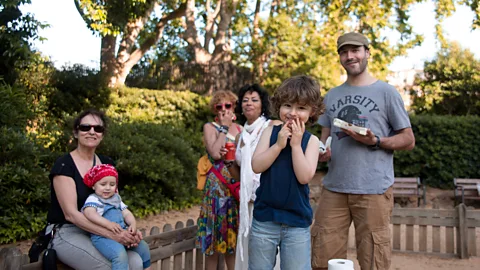As a recognised separate condition, autism is relatively new. It wasn’t included in the Diagnostic and Statistical Manual of Mental Disorders (DSM) – a book with details on the symptoms and recommended treatment of hundreds of mental conditions – until 1980. This means that before then, children with ASD often got misdiagnosed with a condition like schizophrenia, or were never diagnosed at all, Gross says. But even this recognition proved narrow. The 1980 criteria included, for example, an onset before 30 months of age, lack of responsiveness to other people, and language delays – and all of the criteria listed had to be met to receive a diagnosis.
In the 45 years since, the diagnostic criteria for autism have broadened. An especially big shift came in 2013, when, for the first time, the DSM brought subcategories including Asperger’s syndrome under the umbrella of autism spectrum disorder (ASD). People who wouldn’t previously have received an autism diagnosis now are more likely to meet the criteria.
Diagnostic disparities have also narrowed in groups that were historically overlooked, such as racial minorities in the US. Even today, diagnosis rates can differ greatly depending on the area a person lives in. For instance, autism spectrum disorder (ASD) was identified in fewer than 1% of 8-year-olds in Texas in April 2025, but more than 5% in California – likely reflecting differences in access to evaluation.
Autism diagnoses also can help with obtaining support such as government benefits, or more time to complete exams – potential reasons to seek out a diagnosis that wouldn’t have necessarily been available in decades past. Meanwhile, screenings for autism have become more sensitive, and many children are getting screened and identified earlier than in past years.
 Getty Images
Getty ImagesThe gradual lessening of stigma is also thought to have led to more autism evaluation in children and adults, while both members of the public and health professionals have become far more aware of ASD’s many manifestations.
In particular, people have a better understanding of the varied ways that autism may be visible – including in “people who might not have been caught in previous years, who maybe have less intense support needs”, Gross says. This is true in many parts of the world. Yun-Joo Koh, the principal investigator at the Korea Institute for Children’s Social Development, says that in this country, many parents are learning about ASD through social media and coming to her clinic earlier than they used to.
All of this means fewer hidden cases of autism. “Autistic people have always been here,” says Rosa. “But we have never really had a good sense of how many there are.”
In the genes
Autism is very heritable – meaning attributable to genetic factors – but very complex, says Sven Sandin, a statistician and psychiatric epidemiologist at the Karolinska Institute in Stockholm and the Icahn School of Medicine at Mount Sinai in New York.
Sandin’s research across five high-income countries has found that ASD is about 80% heritable. That means that, across a population, roughly 80% of the differences in ASD risk are due to genetic variation. In other words, genetics are behind most ASD cases. His research in Sweden has found that it’s especially heritable among boys: 87% for boys and 75.7% for girls. As with so many aspects of autism epidemiology, it’s not clear why, Sandin says.
But what does seem clear from his work, including one of his Swedish studies, is that autism runs in families. Children whose full sibling had autism were 10 times as likely to have autism themselves, compared to children whose siblings did not have autism. If a half-sibling had autism, children were three times as likely to have the condition.
Studies of identical twins have found that if one individual has ASD, 65 to 90% of their twins also have it.
But knowing that autism is heritable does not mean any one gene is responsible in everyone who has it. In fact, more than 100 genes have been identified as having some connection to autism diagnosis – although these are not necessarily specific to autism, and there are often links to other conditions. In some people, it’s thought that there might be thousands of genes involved.